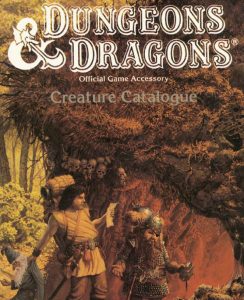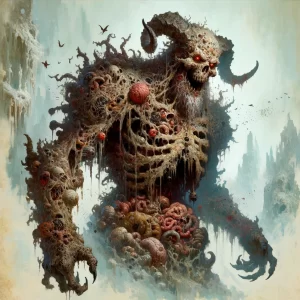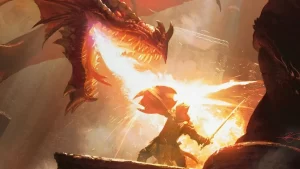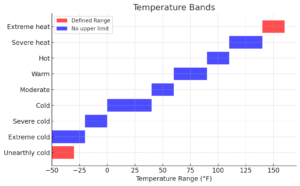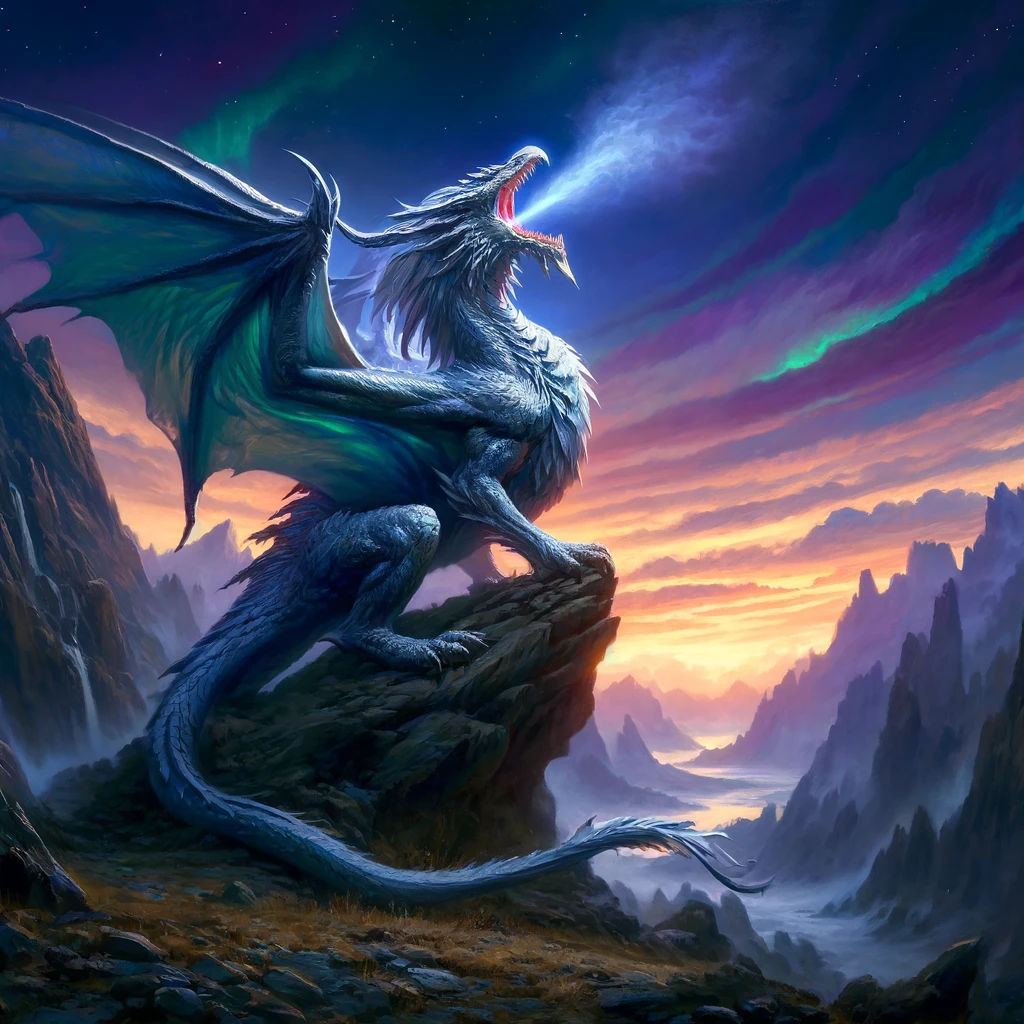
Although the specifics of mating rites and relationships vary from one kind of dragon to another, several commonalities exist. Young dragons can mate, and might do so out of sheer biological urge-or even, at times, for love-but they are rarely prepared to rear their young. They might abandon eggs wherever they feel the eggs will have a decent chance of survival without them, though few eggs left in this way survive-and dragons that hatch from them might not learn to fend for themselves well enough before becoming prey.
By the time they reach adulthood, even evil or selfish dragons, have developed a measure of parenting instinct. They keep their eggs in their lairs, watching over them to ensure safe incubation. Most mated pairs remain together until the eggs hatch, though at other times a single parent-often the female, but sometimes the male-cares for the eggs alone. Sometimes the adults stay together even after eggs hatch. A black dragon is most likely to leave a mate to care for the eggs alone, with white and gray dragons the next most likely. Other chromatics stay together until the hatchlings can fend for themselves, at which point the pair splits up.
Chromatic dragons are a type of dragon distinguished typically by a solid, non-reflective coloring of their scales, hence the name. They were generally evil, greedy, and predatory, and usually worshiped Tiamat, whom they regarded as their queen.
Metallic dragons were a type of dragon distinguished typically by the color and composition of their scales, that was like that of various metals, hence the name. They were generally good, altruistic, and righteous creatures.
Elder dragons lay eggs less often than adults do but treat them with the same care. Ancient dragons almost never produce offspring, but those that do are highly protective-more so even than adults.
A few dragon varieties are monogamous, mating with the same partner every cycle. Greens, blues, and browns often display this behavior. Other dragons have multiple partners throughout their lives and retain little emotional attachment to former mates.
Both male and female dragons become fertile roughly halfway through the young stage of life and remain so until well into their ancient years. The urge to mate emerges at roughly the same time that fertility takes hold, grows to its height during the early adult stage, and fades-sometimes slightly, sometimes to nothing-at the late elder or early ancient stage.
The sun is setting and it's getting colder in these mountains. Early twilight has begun. Preparing to set camp, your hairs stand up when a burst of deep, long, heavy screams begin to echo throughout the range. The sound is unique, yet distinct: a dragon's mating call: as if cracking and rolling thunder were vying for placement in the skies, and crashing ocean waves came to interfere, this would be their argument, audibly on display.
